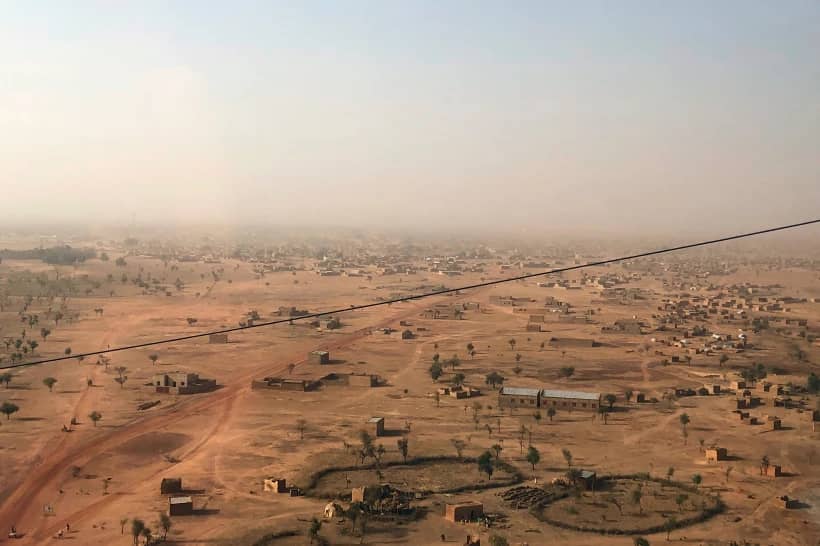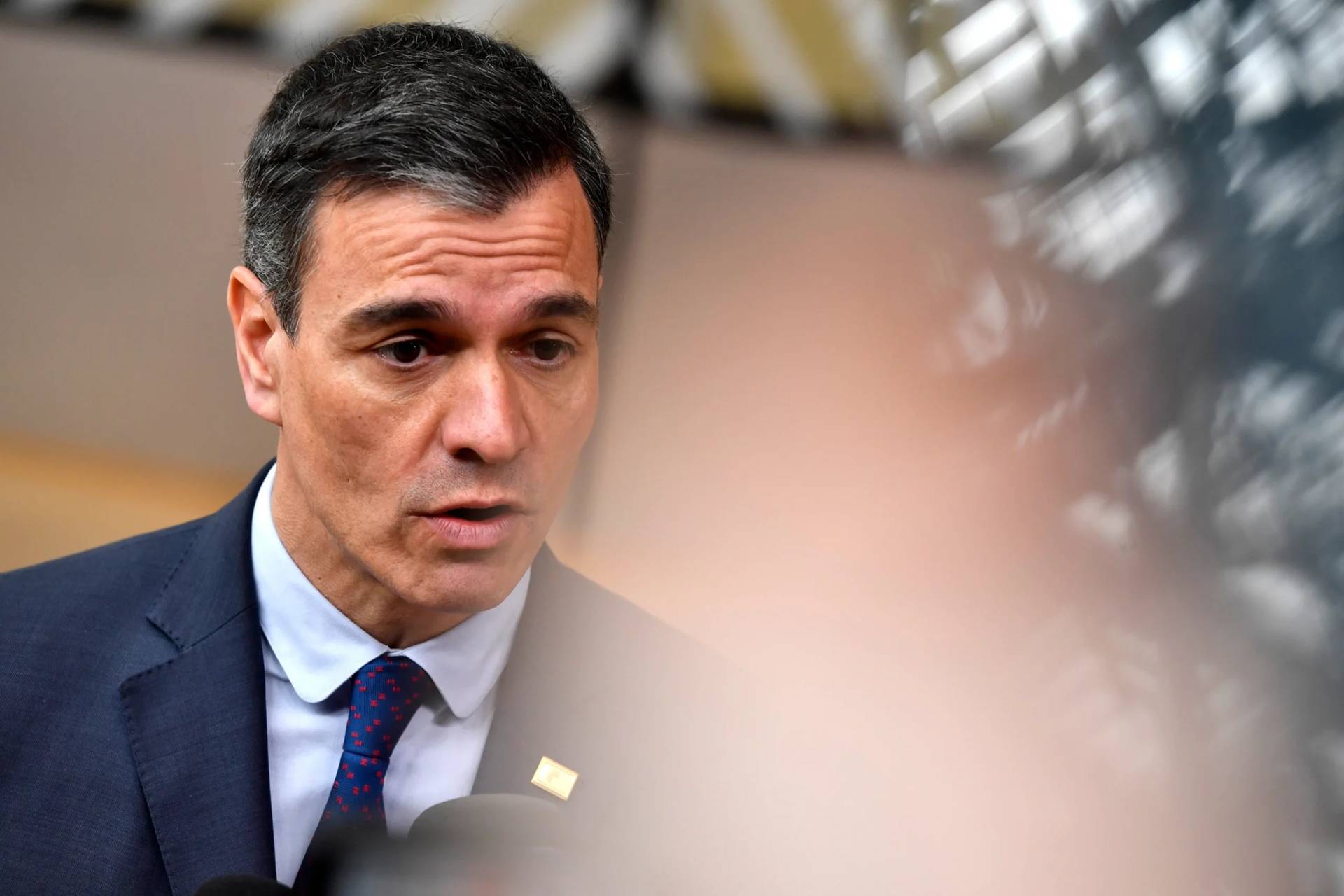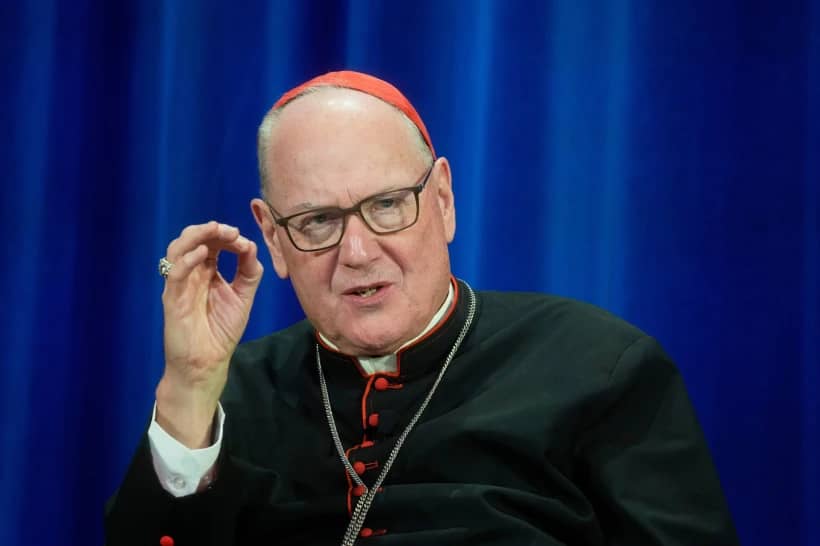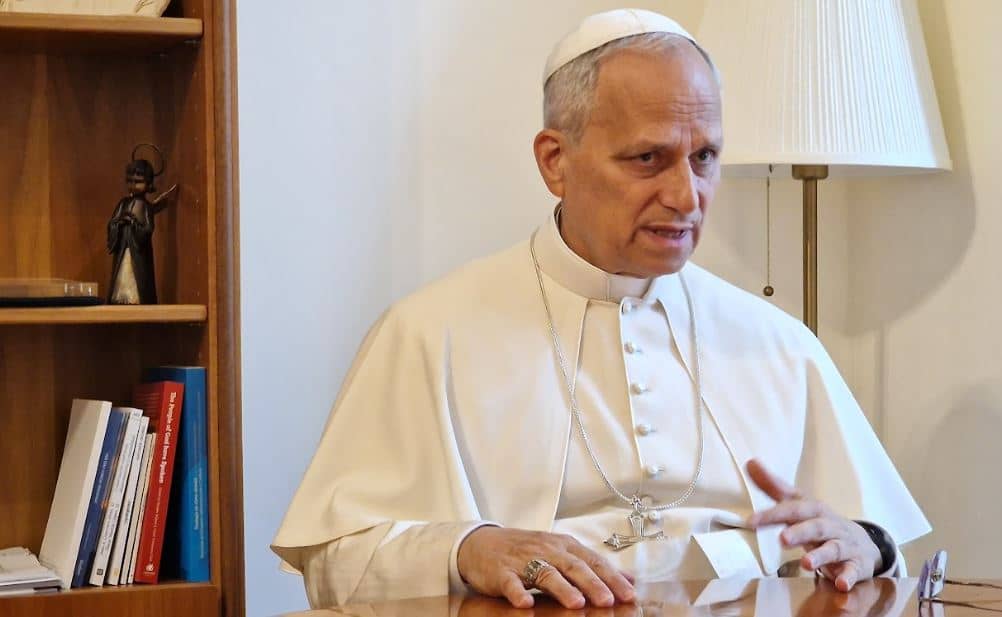One of America’s leading experts on Catholic liturgy says that by returning primary control over the translation of liturgical texts to local bishops’ conferences, Pope Francis isn’t just settling historical scores but trying to integrate the fruits of fifty years of experience of worship in the vernacular languages of the world.
“It can’t just be that the pendulum swings back and forth,” said Monsignor Richard Hilgartner. “I don’t think the Church would be able to survive if every papacy were just a swinging in one direction or the other.”
Currently the pastor of St. Joseph’s Parish in Cockeysville, Maryland, Hilgartner is a former executive director of the U.S. Bishops’ Secretariat for Divine Worship.
“We’ve learned a great deal over the last fifty years about how language works, and how people communicate,” Hilgartner said. “I think this is an attempt to capture some of the best of it. We’ve not completely jettisoned the principles for translation. There’s still a call for a faithful translation. The question is simply, who’s best positioned to make the right judgment about that?”
Hilgartner spoke Monday to “The Crux of the Matter,” Crux’s weekly radio show on The Catholic Channel, Sirius XM 129.
Hilgartner said he was surprised on Sunday to see Francis publicly respond to comments by Cardinal Robert Sarah of Guinea, Prefect of the Vatican’s Congregation for Divine Worship and the Discipline of the Sacraments, about the pontiff’s recent document Magnum Principium, which effectively aims to reduce the Vatican’s control over translations and beef up that of bishops’ conferences around the world.
RELATED: Pope tells Sarah power is indeed shifting from Rome to the bishops
“I think what’s surprising is how public his response was,” Hilgartner said.
“The letter was dated Oct. 15, so it was a week ago, and in the letter is an explicit instruction that the Holy Father’s response to Cardinal Sarah’s comments needed to be publicized with the same web sites and blogs [where Sarah’s commentary originally appeared].”
“What’s most surprising, pleasantly surprising, is that clearly, the Holy Father understands the nature of social media, both the power and sometimes the danger of it,” he said. “Rather than the traditional private conversation, this became very public using the same instruments that were fanning the flames in the first place.”
Hilgartner predicted that restoring primary control over translations to local bishops probably won’t mean much in the short term for what American Catholics experience at the Sunday Mass, because a new translation was implemented just six years ago and “these are texts that we need to live with for a long time.”
However, he said, there are other translation projects in the pipeline, including the Liturgy of the Hours and baptismal rites for both children and adults. While he doubts the bishops will go back over those drafts and rethink them from the ground up, he does see Francis’s moves as having significance for them anyway.
“They can certainly enter into that process with a greater degree of confidence that their work will be respected, as is,” he said.
“In the past five to ten years, certainly over the period of the Roman Missal, what was seen was that everything was still subject to final editing, final recommendations, and approval by the Holy See,” Hilgartner said. “The spirit the Holy Father is setting up is that the work of conferences of bishops is where the action happens.”
The following are excerpts from Hilgartner’s interview with “The Crux of the Matter,” which was conducted by John Allen and Inés San Martín.
Crux: What’s the background to the Pope’s letter on Sunday? Why is the question of who calls the shots in liturgical translation important?
Hilgartner: The question of translation always involves a delicate balance, and let’s remember that the Church is still relatively new at translating texts from Latin and the other source languages into the vernacular languages for use in the liturgy.

In other arenas one might say, hey, we’ve been doing this for fifty years now, we should have it figured out. But when you’re talking about Church history, this really just started yesterday, right?
Very much so. It’s always a delicate balance, but the ultimate issue here is how much do you slavishly and formally translate word-for-word, versus getting the best possible sense of something understandable? There’s always going to be a judgment call in that, about whether you sacrifice flow and comprehensibility for exactness in literal rendering, which sometimes can lead to a text that’s a little bit more cumbersome.
There’s still debate about the new Roman Missal, for instance, and where it landed in all of that …
By that you mean the collection of prayers and other texts for the Mass, which, in English, got a reboot six years ago with a new translation, the most familiar element of which to most people probably is moving from “And also with you” when the priest says, “The Lord be with you,” to saying, “And with your spirit,” right?
Yes, along with words such as ‘consubtantial’ in the Creed to describe the nature of the relationship between the Father and the Son. There are still lots of questions whirling around that, but we’re six years into it, and the dust seemed to have settled, more or less.
Would it be fair to say that in the years right after Vatican II, those judgment calls were made mostly at the local level, and then, beginning in the 1990s, the tide began to shift toward a stronger role for the Vatican? Now, Pope Francis seems to be moving back in the direction of local control. Is that a fair summary?
I think it’s a fair summary.
It’s important to note, though, that the Code of Canon Law always gave the primary responsibility for producing the translations to the conferences of bishops, meaning the local level, or for us, the national level, where the best judgment of how people understand English and how texts can be prepared that are accessible to the people can be made. Even the guidelines for translation produced in 2001, Liturgiam Authenticam, which is really part of what’s at play in this conversation, still recognized the role of the conferences of bishops in that judgment about producing a text that’s understandable and accessible to the faithful.
The final judgment, though, has rested with the Holy See, essentially with the Vatican and the Congregation for Divine Worship. The Code of Canon Law has always recognized that, that the Congregation for Divine Worship has the final say in offering what was known for a long time as the recognitio, meaning the official recognition before a liturgical text can be published and put into use.
What’s shifted now is what the Holy See’s role really is. In Pope Francis’s motu proprio back in September, that role shifted from granting the recognitio to what’s now called a confirmatio, which didn’t really have a whole lot of other equivalent in the law. It’s somewhat new. The pope’s document emphasizes the role of the conference of bishops as being the best judge of determining the fidelity of a translation that’s usable and understandable for the people who would be using it and praying it.
Were you surprised that the pope chose to answer Sarah like this? What do you think it means?
I think what’s surprising is how public his response was. The letter was dated Oct. 15, so it was a week ago, and in the letter itself is an explicit instruction that the Holy Father’s response to Cardinal Sarah’s comments needed to be publicized with the same web sites and blogs.
What’s most surprising, pleasantly surprising, is that clearly, the Holy Father understands the nature of social media, both the power and sometimes the danger of it. We see it in all walks of life, its ability to influence the conversation. Rather than the traditional private conversation, this became very public using the same instruments that were fanning the flames in the first place.
Does the fact the pope chose to respond so quickly and so publicly, when in other cases of criticism or competing spin of his decisions he’s kept silent, suggest that to him, something really important is on the line?
There absolutely is something important on the line. The Second Vatican Council teaches us that the liturgy is the ‘source and the summit of the Christian life.’ As pastors, we know that our primary contact with our faithful in our parishes is on Sunday at Mass. What happens at Sunday Mass is important on a day-to-day basis for the faithful. For most of the faithful, the liturgy is their primary contact with the Church. I think the Holy Father understands that, and takes this seriously.
I think one challenge going forward is the clear indication that there seems to be differing opinion between the Holy Father and, essentially, a member of his cabinet. That difference of opinion suddenly is getting aired in social media and the blogosphere, and that could become toxic quickly.
In the Donald Trump era, maybe there’s nothing especially unique about that! But on the question of what the Pope sees as on the line here, it’s not just the importance of the liturgy, is it? Isn’t it also his reading of Vatican II, which he seems to view as having intended a greater decentralization in the Church and a higher ‘trust level’ in Rome about the ability of local churches to work things out for themselves?
That’s absolutely part of it, and I think one thing that’s helpful to recognize in terms of Francis’s perspective is that he’s the first pope who was ordained a priest after the council. He was ordained in 1969, on the verge of the implementation of the Missal of Pope Paul VI, meaning the official version of the reformed liturgy after Vatican II. He was basically ordained already celebrating the provisional versions of that.
RELATED: Why was Pope Francis so quick to answer these ‘dubia’?
His whole priesthood has been shaped by the post-conciliar time, and his rootedness in living in not only the spirit but the letter of the council is clear. When he spoke to an Italian conference earlier this year regarding Vatican II and the definitive reforms of the liturgy, he didn’t say anything earth-shattering, but he was certainly reinforcing that the liturgy is the way it is because the Second Vatican Council saw in its wisdom to undertake a liturgical reform, and those reforms are here to stay.
Would you agree that for American Catholics, the pope’s moves won’t mean much in the short term for the Mass itself, because most American bishops don’t want to revisit the battles of the 1990s and 2000s?
I’d agree with that.
We’ve only been doing this six years, and while there a few awkward moments in there, there are some things that are a little bit obtuse perhaps, but by and large, it’s a vast improvement of what we’d been using for forty years. To pull the rug out from under that after only six years would be more disruptive, creating the impression that everything can be the whims of the day, that every five years the winds could blow in a different direction and we could shift it again. These are texts that we need to live with for a long time.
So where might American Catholics feel the implications of this decision?
I think moving forward, there a number of projects before the bishops now that clearly could be impacted. I don’t think it’s that the bishops would have to go back and redo any of the work that they’ve been doing on, say, the Liturgy of the Hours, or they’re beginning to look right now at the rites for the baptism of children and also the RCIA, the rite of Christian initiation for adults. Those texts are in various stages of drafting and consultation leading, probably, to presentation for a vote and approval within the next year or so.
I don’t know that they’d change the principles with which they translate, but they can certainly enter into that process with a greater degree of confidence that their work will be respected, as is. In the past five to ten years, certainly over the period of the Roman Missal, what was seen was that everything was still subject to final editing, final recommendations, and approval by the Holy See. I think they can approach this with a greater sense of confidence. Certainly, the spirit the Holy Father is setting up is that the work of conferences of bishops is where the action happens.
One way to read what the pope’s doing here is as a settling of historical scores, going back to debates that were hot twenty years ago and reversing the outcome. Is that how you see it, or do you think there’s something more going on?
I think there’s something more. It can’t just be that the pendulum swings back and forth. I don’t think the Church would be able to survive if every papacy were just a swinging in one direction or the other.
I’d like to think this is a maturing of what we’ve experienced over the last fifty years since the Second Vatican Council. Since then, the pendulum has swung in both directions, some would say, and maybe this is an attempt to integrate and really balance everything. Maybe it’s a way to recognize that yes, the Holy See does have an essential role, especially in a global Church. Even in the letter to Cardinal Sarah, there’s an acknowledgment there are certain essential formula that the Holy See has a greater responsibility to oversee. They’re the essential sacramental formula, which belong to the Holy Father himself to be able to approve.
There’s also, however, a recognition that we’ve learned a great deal over the last fifty years about how language works, and how people communicate. I think this is an attempt to capture some of the best of it. We’ve not completely jettisoned the principles for translation. There’s still a call for a faithful translation. The question is simply, who’s best positioned to make the right judgment about that?
















